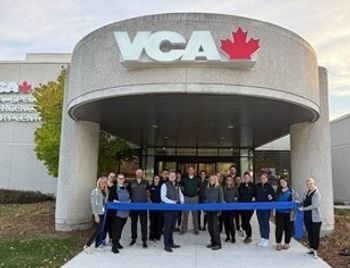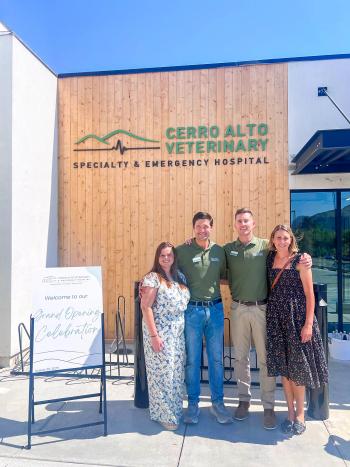
Hanging with Hafen: Don't let your practice fall prey to these disturbing trends
Some say the "perfect storm" is headed toward veterinary medicine. Here's how to brace yourself and prepare for the future.
I recently attended a presentation by Dr. Mike Cavanaugh, the new Executive Director of AAHA, on what he described as the perfect storm. Was I ever impressed and scared! Right now, you’re facing a storm, even if you don’t see it coming.
In a nutshell, veterinary schools are continuing to graduate more veterinarians than the market can absorb. These veterinarians are graduating with fewer hands-on practical skills, but a lt more debt. In fact, the average veterinarian graduates with $136,000 in debt but only makes about $63,000 in his or her first year of work. Meanwhile, the number of pets continues to increase, but the number of client visits to veterinarians has leveled off and, in some cases, has decreased. Traditional practice are being squeezed by the fragmentation of the market with clients on one end going to low-cost providers and on the other end to specialty practices.
To top it off, we architects have seen the cost of building and equipping a veterinary facility grow significantly in recent years. In some areas of the country, construction costs have increased by nearly 100 percent in the last 10 years.
So what are you to do? As an architect, I can at least offer some ideas that are “bricks and mortar” based.
Build hands-on training hospitals. We’ve been fortunate to be involved with a number of veterinary schools that have built freestanding veterinary training hospitals remote from the school. For the most part, these facilities compete in the marketplace on their own merit. Seniors and recent graduates perform and produce as if they were working in a private practice. These facilities are incubators that will make the inexperienced graduates valuable to the private practice that hires them next.
Understand retail economics. Veterinarians actually compete with retailers like Starbucks for clients’ disposable income. You also compete with clients’ other needs and wants, like shoes, cars, housing, and even human medical expenses. Unfortunately, the recent recession has shown that there is a cap to the amount of money people can and will spend on their pets. And no matter how much you talk about the human-animal bond, you can’t change this.
When people make a purchase at Starbucks, they’re not just buying coffee. They’re buying the client experience. The vast majority of clients don’t know whether you provide quality medicine. They’re grading you on your interaction with them, whether your staff is polite and friendly, and whether their visit is stress-free.
Find a niche. The veterinary market, like most other retail markets, has been broken into pieces. For example, look at the way you buy groceries. You buy specialty foods from a store like Whole Foods, generic foods from your local supermarket, and bulk foods from places like Costco. The veterinary market is the same. You’re competing with specialty practices, low-cost clinics, cat- or dog-only clinics, and high-tech boutiques. Can you identify a particular niche or market segment where you can excel? I was recently talking with a veterinarian in a rather remote location who, in addition to her general practice, has gone into the reproduction market and is very successful.
In many markets, the greatest population growth is occurring in the more central urban neighborhoods. This is a reflection of the growing number of non-nuclear conventional families. Empty nesters, single professionals, and even alternative lifestyle families are moving to the cities. Often, these less conventional groups have more disposable income than the more conventional suburban families. This creates an opportunity for veterinarians to move into an urban niche.
Develop more efficient buildings. For years, veterinarians have built bigger and bigger facilities, reciting that old adage, “If you build it, they will come.” In smaller, more efficient facilities, you have less overhead and can often net more income, even as the larger facilities gross more income.
Create cooperative delivery systems. Have you ever considered building or being part of a system where individual hospitals share capital expenditures? I’ve seen this model work in a number of individual markets around the country. In it, several hospitals limit themselves to simple, minimal leasehold facilities and then share a central hospital where they have surgery privileges, much like human hospitals.
Another way to cooperatively build a delivery system is to create a hub and spokes with central hospitals and satellites all under one central management structure.
Invest in training. As the market and the industry change, it’s increasingly important that your staff is trained to respond to these challenges. In the most successful practices I’ve seen, there’s a strong commitment to continuous training. To be successful with such an initiative, you need a place to do this training on site and on a regular basis.
Explore other development alternatives. Most veterinarians focus on buying ground and building a hospital as the ultimate goal. But ground costs have grown even faster than building costs, and in many of the best markets, land to build a veterinary hospital is unavailable. We may even see an increase in ground leases; instead of buying a parcel, you would lease one for a period of 30 to 99 years. This makes hospitals located in leaseholds a great way for veterinarians to drive down capital costs.
To paraphrase one of my favorite quotes, the only thing that remains the same is change, except that today, change is happening even faster than ever. Going back to the perfect storm analogy, any good sailor worth his salt knows that in the face of overwhelming weather, you have to keep your boat pointed into the wind. In doing so, you might not go anywhere, but you’re best positioned to take advantage of any opportunities that may blow down on you.
Veterinary architect Mark Hafen, AIA, is a Veterinary Economics Editorial Advisory Board member and co-owner of Animal Arts in Boulder, Colo.
Newsletter
From exam room tips to practice management insights, get trusted veterinary news delivered straight to your inbox—subscribe to dvm360.






